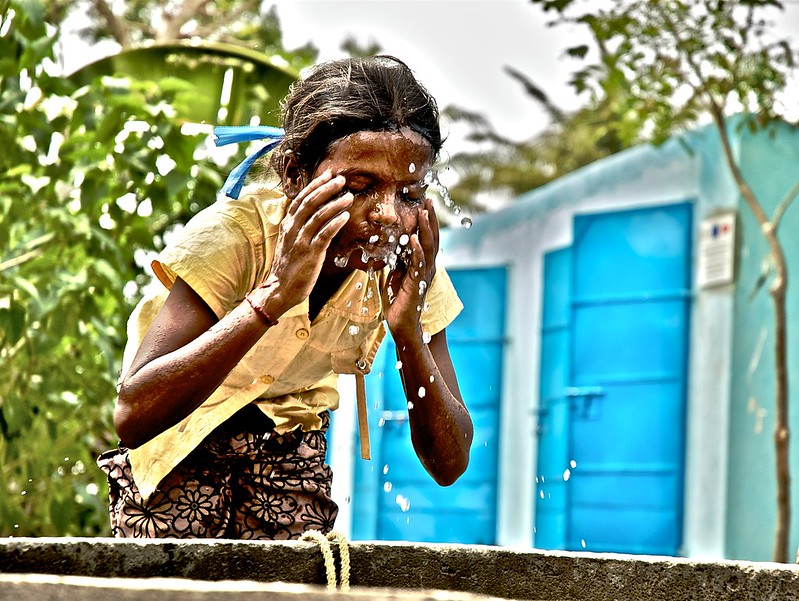Update on SDG 14: Life Below India’s Waters

All member states of the United Nations (UN) adopted the Sustainable Development Goals in 2015 to ensure a collective global effort toward meeting urgent environmental, social and economic needs. The UN adopted 17 such goals, ranging from no poverty and zero hunger to clean energy and decent work, in pursuit of developing every country together in a holistic way. One of these goals is SDG 14: Life below water, broadly focusing on the conservation and sustainable usage of oceans, seas and marine resources. It includes the sustainable management and conservation of coastal and marine ecosystems, reduction of marine pollution, minimization of the effect of ocean acidification, prohibition and limitation of certain forms of fisheries and increase in the economic benefits to Small Island Developing States (SIDS), among many other concerns.
India and Its Need for SDG 14
In a country as populous as India, water is an in-demand resource. With approximately 18% of the world’s population residing in India, the country faces challenges in ensuring its citizens have access to safe and clean drinking water. According to the Composite Water Management Index that the Indian government published in 2018, India is undergoing the worst water crisis in its history, with more than 600 million people already facing acute water shortages. India has a coastline that spans more than 7,500 kilometers. Although this position allows it to utilize oceanic resources, it also leaves the country susceptible to overexploiting the same resources and contributing to marine pollution.
A study in Science Journal reports that India ranks 12th, amongst 192 countries, for disbursing the maximum amount of plastic waste into the high seas from their coastline. According to UNEP, 60 major Indian cities generate 15,000 MT of waste per day which ends up in the South Asian seas. In light of this, the need to address and make progress on SDG 14 becomes even more pressing for India.
The Intersection of Water and Poverty in India
The unavailability of water has become one of the most important issues affecting India’s poor. Out of India’s population, 6% of the people lack safe water access and more than 50% lack access to safely managed household sanitation facilities. This makes the Indian population, particularly the poor, more vulnerable to numerous waterborne diseases such as cholera, acute diarrhoeal diseases, typhoid and viral hepatitis (which have caused 10,738 deaths in the period between 2017 to 2022). Toxic waste in water bodies, such as pesticides and fly ash among others, affects the ecology and the marine population and poses a challenge to fishermen and other communities, resulting in a loss of livelihood.
Furthermore, rapid industrialization and pollution of groundwater have also become a looming crisis for the country and its people.
Efforts for Betterment
The Indian government has consistently been making efforts to address the issues of sanitation, water pollution and water availability. The country has come up with a State SDG Index, modeled after the international SDG Index, which allows for a decentralized and area-specific plan to emerge to achieve SDG targets within the country. India has also come up with a Marine Protected Area (MPA) network which is used to manage and conserve marine biodiversity. In 2021, the Indian government notified Plastic Waste Management Amendment Rules, banning the use of single-use plastics in the country, in an effort to reduce the plastic waste generated.
Furthermore, India has initiated various projects to enhance water quality and safety, notably through initiatives like the National Mission for Clean Ganga. This program concentrates on activities such as wastewater and effluent treatment, the management of solid waste and the development of riverfront areas. Another such project was a 75-day-long coastal clean-up drive called “Swachh Sagar, Surakshit Sagar” which aimed at reducing 1,500 tonnes of garbage from the coast. The Indian government has partnered with the World Bank on various initiatives, including the Atul Bhujal Yojana, to enhance groundwater management and provide clean drinking water to rural Indian communities.
The Indian government has also been working to reduce open defecation in the country through the Swachh Bharat Mission (Clean India Campaign), through which the number of people defecting in the open has been significantly reduced by an estimated 450 million.
Looking Ahead
India still has a long way to go to fully achieve the goals highlighted under SDG 14, but the country has made notable progress. The initiatives undertaken by the Indian government in this direction indicate hope that the country is on a path to sustainable development and that the SDG targets might see improvement, if not fulfillment, in the near future.
– Manasvi Kadian
Photo: Flickr
